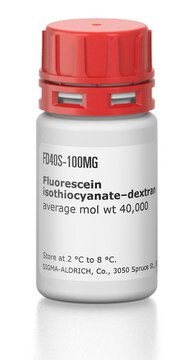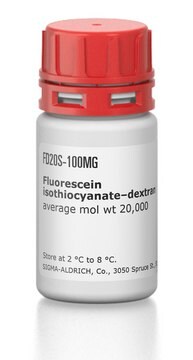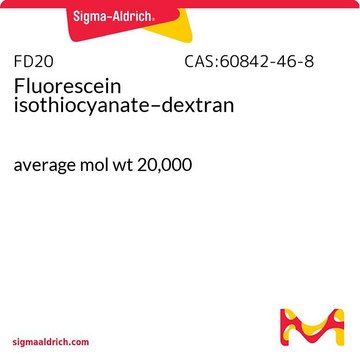FD250S
Isothiocyanate-dextrane marqué à la fluorescence
average mol wt 250,000
Synonyme(s) :
FITC-dextrane
About This Item
Produits recommandés
Source biologique
bacterial (Leuconostoc mesenteroides)
Conjugué
FITC conjugate
Forme
powder
Poids mol.
average mol wt 250,000
Ampleur du marquage
0.003-0.020 mol FITC per mol glucose
Couleur
yellow to orange
Solubilité
water: 25 mg/mL, clear, yellow
Température de stockage
2-8°C
Vous recherchez des produits similaires ? Visite Guide de comparaison des produits
Description générale
Application
Notes préparatoires
Autres remarques
Mention d'avertissement
Warning
Mentions de danger
Conseils de prudence
Classification des risques
Eye Irrit. 2 - Skin Irrit. 2 - STOT SE 3
Organes cibles
Respiratory system
Code de la classe de stockage
11 - Combustible Solids
Classe de danger pour l'eau (WGK)
WGK 3
Point d'éclair (°F)
Not applicable
Point d'éclair (°C)
Not applicable
Équipement de protection individuelle
Eyeshields, Gloves, type N95 (US)
Faites votre choix parmi les versions les plus récentes :
Déjà en possession de ce produit ?
Retrouvez la documentation relative aux produits que vous avez récemment achetés dans la Bibliothèque de documents.
Les clients ont également consulté
Notre équipe de scientifiques dispose d'une expérience dans tous les secteurs de la recherche, notamment en sciences de la vie, science des matériaux, synthèse chimique, chromatographie, analyse et dans de nombreux autres domaines..
Contacter notre Service technique










